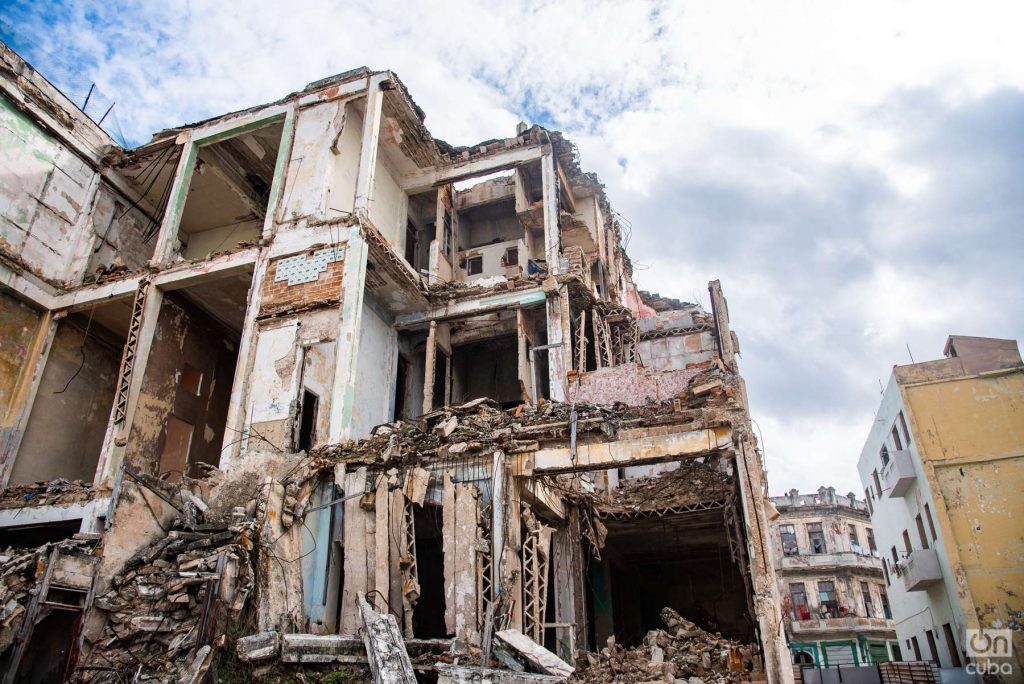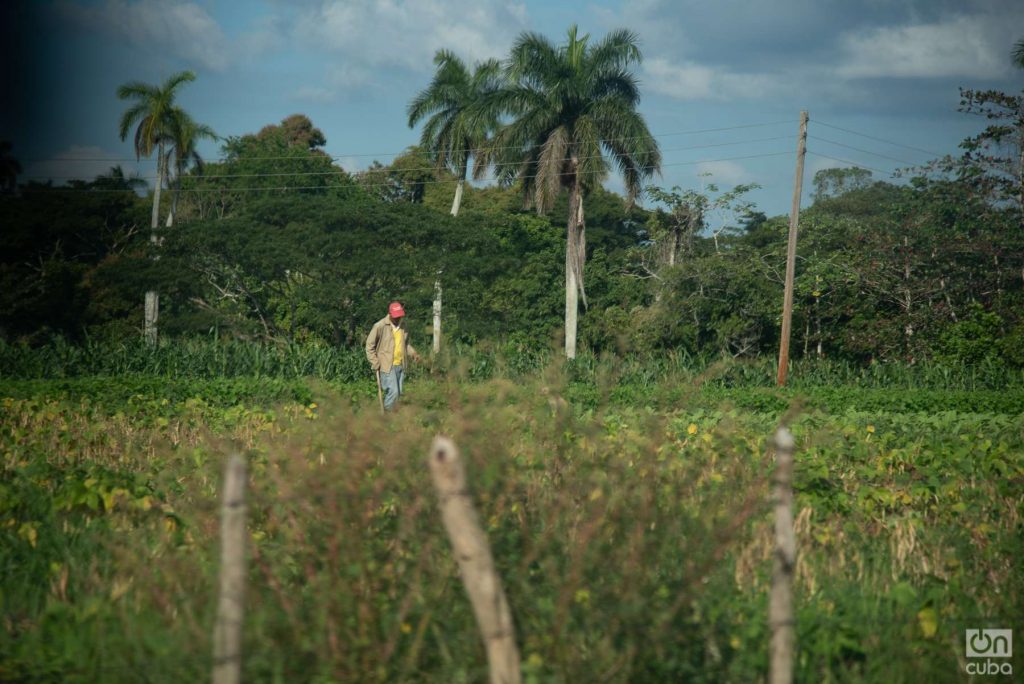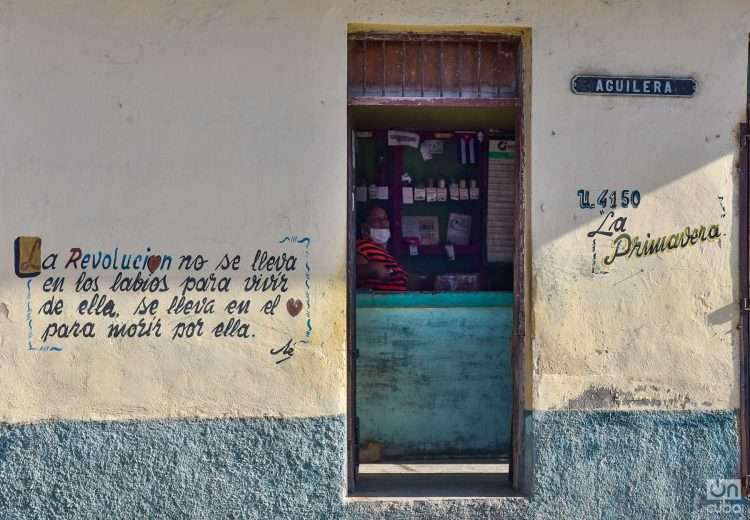The Cuban economic scenario in 2022 can be described, at the least, as adverse. The joint effect of a hostile international context, the COVID-19 pandemic, the accumulation of problems derived from poor administration and errors in the implementation of new measures, frustrated any attempt to improve and recover the domestic economy. It was another year of unfulfilled plans and unmaterialized solutions.
Our review of some significant economic aspects of the last twelve months in Cuba focuses, below, on those that have directly affected the daily life of the island’s residents, for whom 2022 has been more than “a hard and difficult year,” as described by Minister of Economy and Planning Alejandro Gil; it’s been a terrible year.
Inflation doesn’t stop, prices don’t go down
In 2022 prices went up, on average, by 29%. But year-on-year statistics show that from October 2021 to October 2022 inflation increased by almost 40%, as Gil acknowledged before the National Assembly.
For Cubans, the figures are a daily reality. The growing inflation has been corroborated in the loss of the population’s purchasing power and the direct effect on wages and pensions.
The supply deficit has led to an increase in prices in the informal market. The original value of the products can be multiplied up to almost ten times.
In particular, regarding food, official data for October 2022 showed a year-on-year general inflation of 62.73%, compared to October 2021. In the opinion of economist Pedro Monreal, the index confirms that Cuba is experiencing mainly food-related inflation.
The production of basic sectors — fundamentally agriculture and fishing — represented 33% in 2022 compared to 2019, according to official information.
The minister of economy explained the phenomenon as “an effect of the lack of availability of foreign currency, the decrease in production plans, the supply deficit and indiscipline associated with the diversion of resources, speculation, resale and illicit enrichment.”
The authorities recognize that the increase in supply is a problem to be resolved, since they consider that the increase in income will not solve the inflationary scourge.
Housing program: non-compliance is the rule
Housing construction, despite being an area of high sensitivity and because it is a sector that has remained for decades as the “main accumulated social problem” on the island, this year did not show signs of recovery.
In practical terms, non-compliance remains. Despite the fact that the Cuban government announced at the beginning of the year that the National Housing Program would be given “top priority,” of the planned plan of 36,831 housing units, only 21,229 were completed, 58%; that is, a little more than half.
Although the housing construction program, in force since 2018, projected that the deficit would be balanced; that is, that this problem would be solved on the island in a period of ten years, the trend has been to slow down the completion of dwellings in the last three years. In 2021 the plan was only 42% fulfilled.

Vivian Rodríguez, general director of the Housing Program, acknowledged that there are “delays from 2013” and “in all provinces, especially in Guantánamo, Mayabeque, Camagüey, Las Tunas and Granma.” According to statistical data, Cuba maintains a deficit of almost 863,000 units for a population of 11.1 million people.
But the state program, only six years from the deadline for “solving” the housing problem, failed to overcome its fundamental obstacles: the lack of materials and resources, and the lack of manpower. Nor was it able to get rid of corruption and crime, as confirmed by Ana Yamira Pérez, general director of the inspection unit of the Ministry of Construction.
A miracle is expected in food production
Food production on the island in the course of 2022 can be described as critical. It is not for nothing that this has been called a matter of national security and has been recognized as an urgent horizon on which Cuba should focus its efforts.
The low productivity, as reported, was due, among other factors, to inefficiency in the processes, the impact of adverse weather conditions, the lack of opportunities in the supply of inputs and the effects of the Task of Reorganization.
The poor results of the agricultural sector respond to a combination of factors, none of them exactly new. They range from a lack of fuel, energy, fertilizers, machinery and inputs in the required quantities, to non-payment to producers — yet to be resolved —, non-compliance with the delivery of land and incorrect inspection of those delivered, as well as the loss of workforce.

In parallel, the production of the food industry in 2022 did not grow compared to the previous year. The causes: failure to deliver raw materials, financial and contracting problems, and energy limitations.
Cuba maintains an annual import of more than 2 billion dollars in food. Despite the high prices on the international market, the island’s critical financial situation and the lack of foreign exchange earnings to support purchases abroad, imports cannot be reduced because productivity is not growing.
The most undesirable effect is the insufficient supply for the population, which, added to the lack of an efficient price regulation mechanism, ends up forcing the consumer to pay high amounts for food.
Hope yes, medicines no
2022 has been a year marked by the sustained lack of medicines and supplies, both intrahospital and in the country’s pharmacy network, and the corresponding social impact that results from this.
Although an improvement was forecast in the supply of medicines and other products — especially those sold by control card — for June the availability of medicines registered 219 in lack, of the total of the basic table (73 imported and 146 of national production). Meanwhile, 197 had coverage of less than thirty days, which means that the availability in stock was not enough to cover the needs, according to Minister of Public Health José Angel Portal. We are talking about more than 50% of the basic affected list.
Although the shortage seemed to have reached its critical point in the previous difficult year, in 2022 “the shortage levels” were “higher than those of 2021,” as recognized by Eduardo Martínez, president of the BioCubaFarma Group of Biotechnological and Pharmaceutical Industries.
The basic list of medicines in Cuba in 2022 was made up of 627 drugs; 40% (252) imported and 60% (375) produced by the national industry. As a result of the financial crisis and U.S. economic sanctions, not only were fewer medicines produced on the island — due to difficulties with purchasing raw materials for their formulation — but fewer were also imported.
By 2022, Cuba has accumulated more than five years of fluctuations in the availability of drugs, and more time of deficiencies and illegalities in pharmaceutical services. In July, the verification of pharmacies and optical enterprises showed the deterioration of their economic indicators, with losses and accumulation of overdue accounts receivable and payable to suppliers, financial instability, undercapitalized entities that access bank credit and a high probability of violations of the system of internal control implemented in pharmacies.
From economic inequality to social inequality
In 2022, the partial dollarization process — whose final point is unknown — continued to accentuate the inequalities in Cuban society, which, in turn, came to deepen the gaps accumulated since the 1990s.
External exchange, cataloged by Alejandro Gil as the main factor that stands between the plans and the expected results in economic terms, and in particular the need to collect it, has driven the process of partial dollarization of the economy since 2019, whose main expression has been the opening of stores to raise hard currency.
But the big dilemma on the stage continues to be Cubans’ access to foreign currency. Income from salaries and pensions are in national currency. And the State does not guarantee the sale of virtual currency to the population.
The result is that only those who were able to receive remittances from abroad, and those who were able to buy foreign currency on the island, at skyrocketing prices, through the thriving informal market, had access to purchase in stores in freely convertible currency.
The entry of the dollar into the national economy has made families dependent on remittances, when the majority of Cubans do not receive them.
In the context of galloping inflation and low supply, the dollarization of basic necessities adds to the drop in the purchasing power of wages and pensions. At the end of the year, in the words of the minister of economy, a growth in the number of people requiring social assistance was reported.
For next year, it has been confirmed that 80% of sales will be in Cuban pesos (including services), and 20% in freely convertible currency. In this sense, a notable amount of mercantile circulation in foreign currency is maintained, which includes basic necessities, such as toiletries and food.
This reality of the economy will not change anytime soon. Faced with the predictions of a “better 2023,” Cubans have reasons to remain skeptical. Too much will stay the same to expect different results.











qué triste